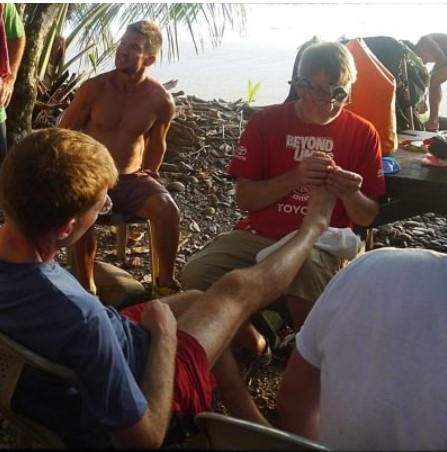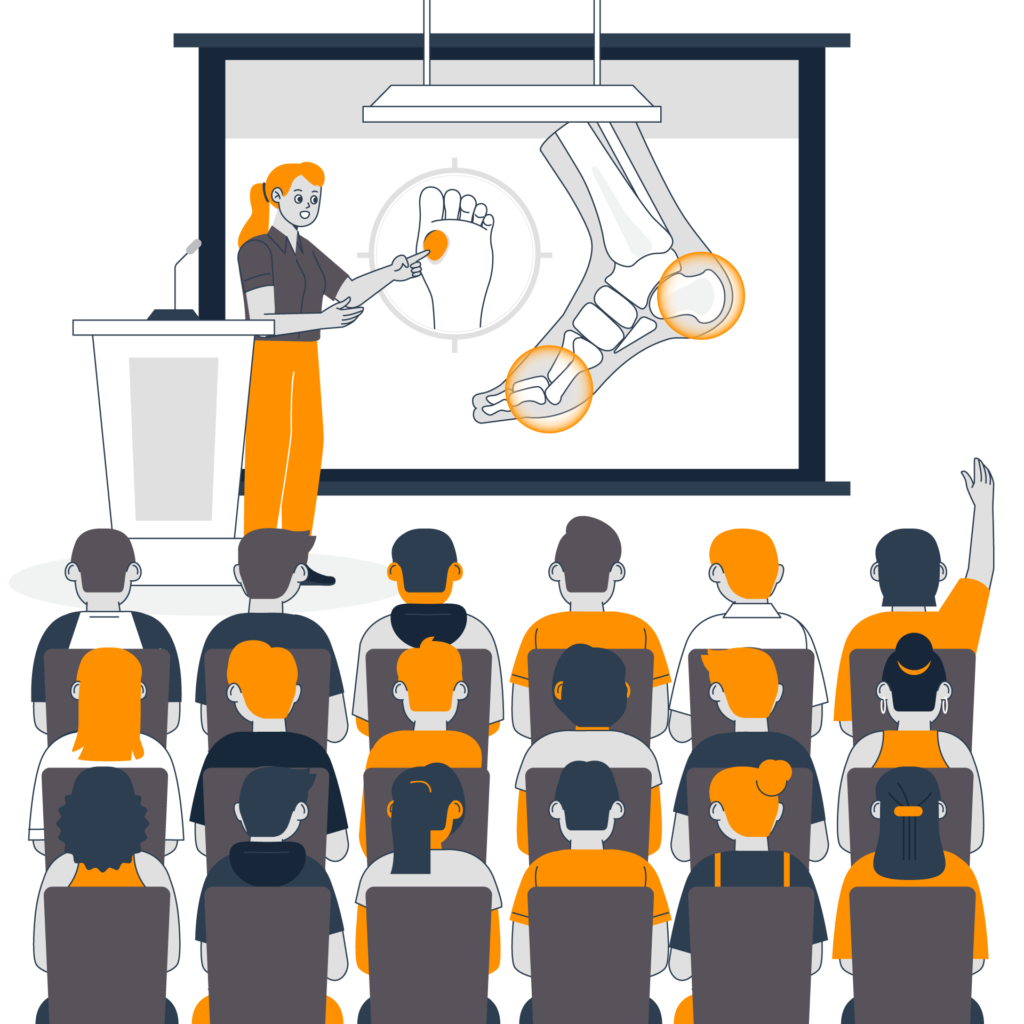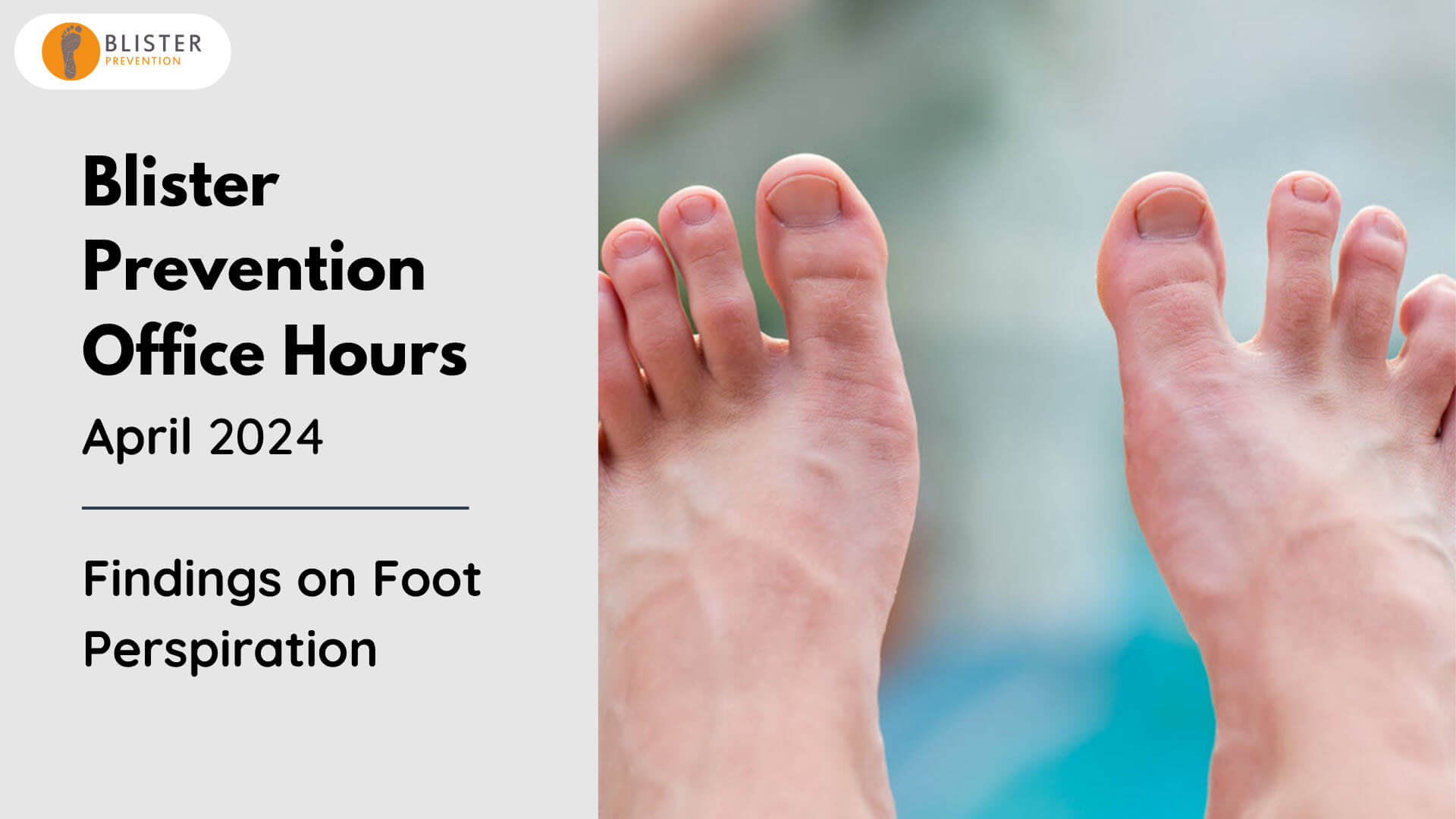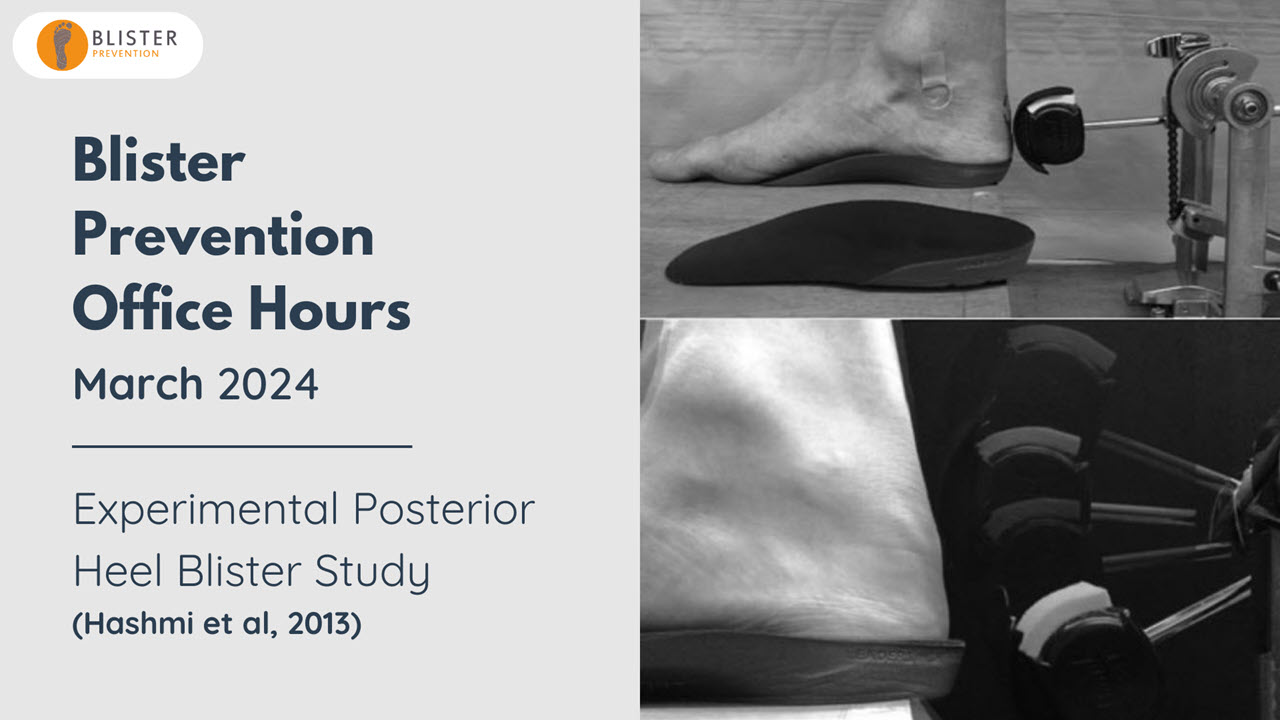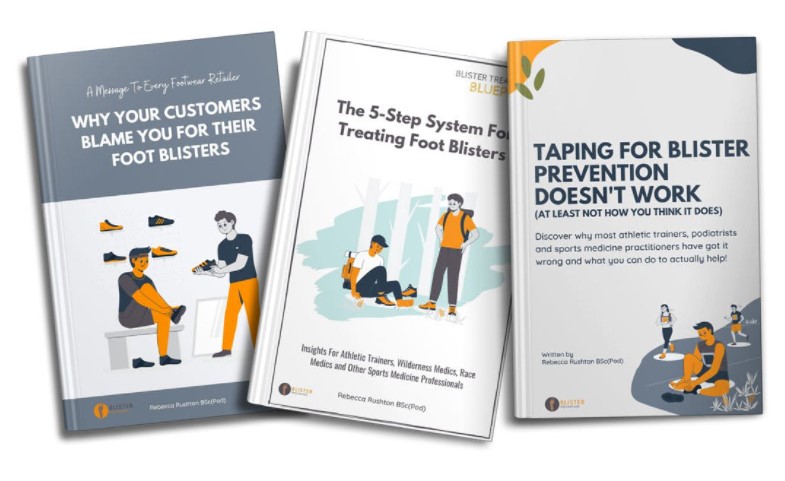Foot care at multiday athletic events is vital. It can be the difference between a participant finishing or pulling out. Between suffering injury or remaining injury-free. And importantly, on the overall participant experience. That said, just because we are there to provide foot care, does that mean we should encourage participants to present to us at every opportunity? In my opinion, no. But it’s a fine line.
The current foot care modus operandi at events
Here’s how I see the basic modus operandi. Participants value our work so highly, because they themselves have very little foot care understanding. As a result, they come to depend on us providing even the most basic of foot care needs. That’s nice, but is it practical? Is it sustainable? Is it even common sense?
Before I state my case for why it is neither, let me say that as a collective, we as event organisers and foot care providers, are responsible for this status quo to some degree, because we’re:
- Proud to offer a great foot care service (and overall medical service) to participants
- Caring people who give freely of our time to help others and we enjoy doing it
- And we sincerely wish for participants to finish the event with a minimum of injury
For these reasons, we actively encourage participants to access us (all hours of the day and night in some cases). But if the need is rather trivial, we tend not to turn that participant away. They’re here, you’re here, might as well help. And the participant really appreciates it, which is nice. This is fine as a one-off. But multiply than by even a fraction of your event’s participants, for every day of your event. Now you’ve got a big workload. Next year will be the same, if not more so. And so it goes on.
It’s not sustainable (depending on your event)
Think about the number of participants in the average multiday event these days (below). And think about how many days your event goes for. Think about how early in the day the event kicks off. What time of the morning participants are requesting your expertise. The difficulties in securing volunteers who have the time and budget to devote to an event they’re not even competing in. Think about how participants agonise over entry fees, on top of all their other expenses. As an event director, even if your entire workforce is voluntary, you have equipment and consumable costs. And that’s just for the most basic of blister management.
- Grand to Grand Ultra (2015): 126 participants
- Dragon’s Back Race (2015): 128 participants
- Western States 100 (2015): 371 participants
- Marathon des Sables (2015): 1,360 participants
- Oxfam Trailwalker Melbourne (2015): 3,000 participants
Providing foot care at multiday athletic events is a significant logistical task. Allowing participants to treat the foot care service provided as a perk of the event is becoming an unsustainable mindset. One example of foot care at multiday athletic events becoming tricky, is Dragon’s Back. Organisers of the Dragon’s Back Race will be implementing significant changes to their next race. Here’s their 2015 Medical Report.
Berghaus Dragon’s Back Race Medical Report
“The challenge that the medical team faced at the Berghaus Dragon’s Back Race™ this year was the sheer volume of patients asking for treatment, and it is interesting to consider how closely this reflects the challenges faced by the NHS. By this I mean, that by offering a first class, ‘free at the point of delivery’ service we really struggled to keep up with demand and the medics worked very hard as a result.
“Incredibly, I actually dealt with a few complaints from competitors who were unhappy that they had to queue for treatment, or that there was no one available at 0500 sharp to dress a blister!
“After some consideration and discussion with the medical team we are going to introduce a triage system for the next Dragon’s Back Race™ in 2017, much like you would see at an Accident and Emergency hospital and insist that competitors take primary responsibility for their own foot care.
This will mean:
- Patients will be assessed in a triage system prior to treatment with the most needy being treated first, regardless of the how long others may have already queued.
- We will not assess anyone’s feet unless they have been washed and are presented in a clean, mud free condition.
- We will expect minor blisters to be treated by competitors themselves.
- At triage assessment, advice will be given as to whether a blister is ‘minor’ and how to treat it if required.
- Competitors must have their own blister treatment kit and this is part of the mandatory kit list for the event.”
John Vonhof weighs in on foot care at multiday athletic events
John Vonhof, foot care stalwart of multiday events all around the world demonstrates similar frustrations:
“I know that at some ultras and adventure races participants will move along the trail from aid station to aid station, and at each one, require some degree of foot care. What was patched at an earlier aid station didn’t work or didn’t hold up. And they want someone at the next aid station to redo their feet. That’s a lot of work and a lot of supplies.
“What compounds this question is that many athletes fail to do what SAR ranger Vandergraff stressed, helping yourself and study up. Anyone who has worked an aid station knows full well that many of the participants fail to take care of their feet to start with, fail to trim toenails, fail to reduce calluses, fail to wear the right socks, fail to wear gaiters, fail to replace worn shoes, insoles and socks, fail to learn how to do self-care, fail to educate their crew on good foot care techniques, and fail to have adequate foot care supplies. So then, when they run into problems, they want help. Their failure to plan, and in many cases, take common sense action that could have prevented or reduced the problem, then creates work and expense by others.”
It’s not common sense, either!
Your participants have been taking care of their own blister management needs until now. Let’s use preventive taping as an example. Unless they can not reach their feet, your participant has been taping their own feet. By now, they have experimented with different tapes and taping techniques. They should have acquired the skill and confidence in this blister strategy. So, unless there are extenuating circumstances, it doesn’t make sense to have someone else do their taping during the event. Or be limited to the brand of tape provided by the event. Rather than reinforce the status quo of event foot care as it stands today, I’d rather empower participants to continue with their blister management strategy themselves.
And so the question becomes …
The question then moves to the opposite end of the spectrum. Should foot care at multiday athletic events be provided at all? Or is there a middle ground? To what degree do we insist on self-management? After all, we are there to do a job and that is to look after feet. Do we really want participants going it alone with “do-it-yourself foot care” for every level of issue? No, we don’t. There is a fine line to tread here.
Here are some comments from a recent discussion I had with experienced race director, Lucas Trihey, about previous attempts at finding this fine line:
- Any hint of “they don’t want to do our blisters” and we are setting up for them to DIY back at their tents and we’ll see problems with infections and other nasties.
- It’s quite tricky to get runners to observe proper wound hygiene and when we’ve tried to let them do their own blister dressings it has ended badly.
- I think we need to have them within our orbit for all treatments – ideally a special area in the footcare / physio tent where they can help each other – I think this needs to be done under supervision from the medical team. So by all means we want them to do their own things but under a watchful eye of someone who actually knows what they are doing.
I really like this idea: “Assisted self-management”
Assisted foot care self-management for blisters
Runners managing their own issues within our orbit
This means having space in the medical tent for participants to do what they can themselves (or with each other) with us looking on to provide advice, guidance and the necessary supplies. We pitch in when closer assessment or treatment is required. In this way, we have the opportunity to empower participants with a higher level of self-management skills. This sets them up to cope the next time they need blister work and they are on their own. Plus we can ensure blisters are being managed appropriately (proper hand hygiene, blister dressing selection etc). Assisted self-management might look something like this:
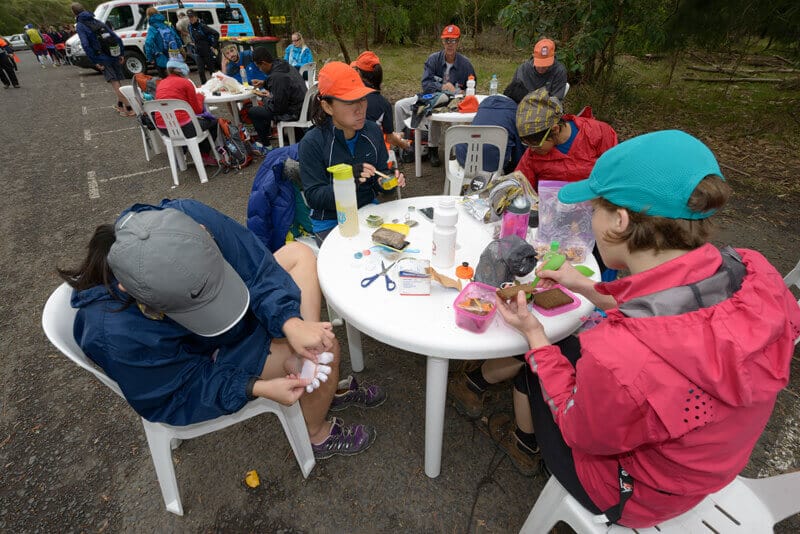
- A plastic table with four chairs around it within the medical tent.
- Four participants sit at this table and either do their own foot care or pair up and help one another.
- We’ll be on hand to provide advice and a little assistance.
- The table allows participants to put their own supplies up off the ground.
- We could put additional supplies like Aquium, gloves and other things in the middle of the table.
- Then anyone needing more involved treatment can be seen on a treatment table.
Watch this video for more about providing great blister management at athletic events.
Conclusion
It all depends on your event.
The degree to which your event implements the principles of assisted self-management depends on many variables. The number of participants, the remoteness of the location, the access to equipment and the number of volunteers, among others. Mostly, it will depend on the ethos of the event, which comes from the race organisers.
If you’re a volunteer, you’ll more than likely be advised on how things will roll in the medical tent shortly before the event kicks off. If not, have a discussion with your Event Director, or Foot Care Coordinator.
PS: Want to know what it takes to impress your foot care volunteers?
I must relate two stories of my time providing event foot care that have impressed me. Both are from 2014 and have left a lasting positive impression on me.
Story 1
One gentleman running a 6-Day ultramarathon legitimately could not get to his feet. He knew that would be the case, brought his own supplies (adhesive felt, already cut to shape) and gave me clear instructions on how to apply it. He even asked me to re-do one tape between the toes because there was a bit too much tension on it. I was very impressed because he had nutted out what works (with the help of his podiatrist) and brought the stuff with him.
Truth be told, if it was up to me, in the absence of any information from the athlete, he would have had something quite different on his feet. I would have used thicker felt for one thing. This is how athlete and medic can work together, in the medical tent, for a successful blister outcome. As opposed to a mindless “Do what you can with them, please Doc” approach.
Story 2
The other was another 6-Day runner who I didn’t even see for blisters during the race. All the hard work was done in the months leading up to it. We’d spent a fair bit of time on email as I answered lots of questions and provided lots of information to back it up. The result was an athlete who was able to make informed decisions in understanding why she was having blister issues and figuring out what her best options were in fixing it. She contacted me well in advance of the race so she had time to experiment.
The benefit of being informed was that when trouble occurred, she was confident in the steps that needed to be taken. It was the self-awareness and confidence in her troubleshooting process that impressed me. What this should be impressing upon you is that the most beneficial work in getting on top of blisters, takes place in the months leading up to an event, not the day or week before the race starts.

